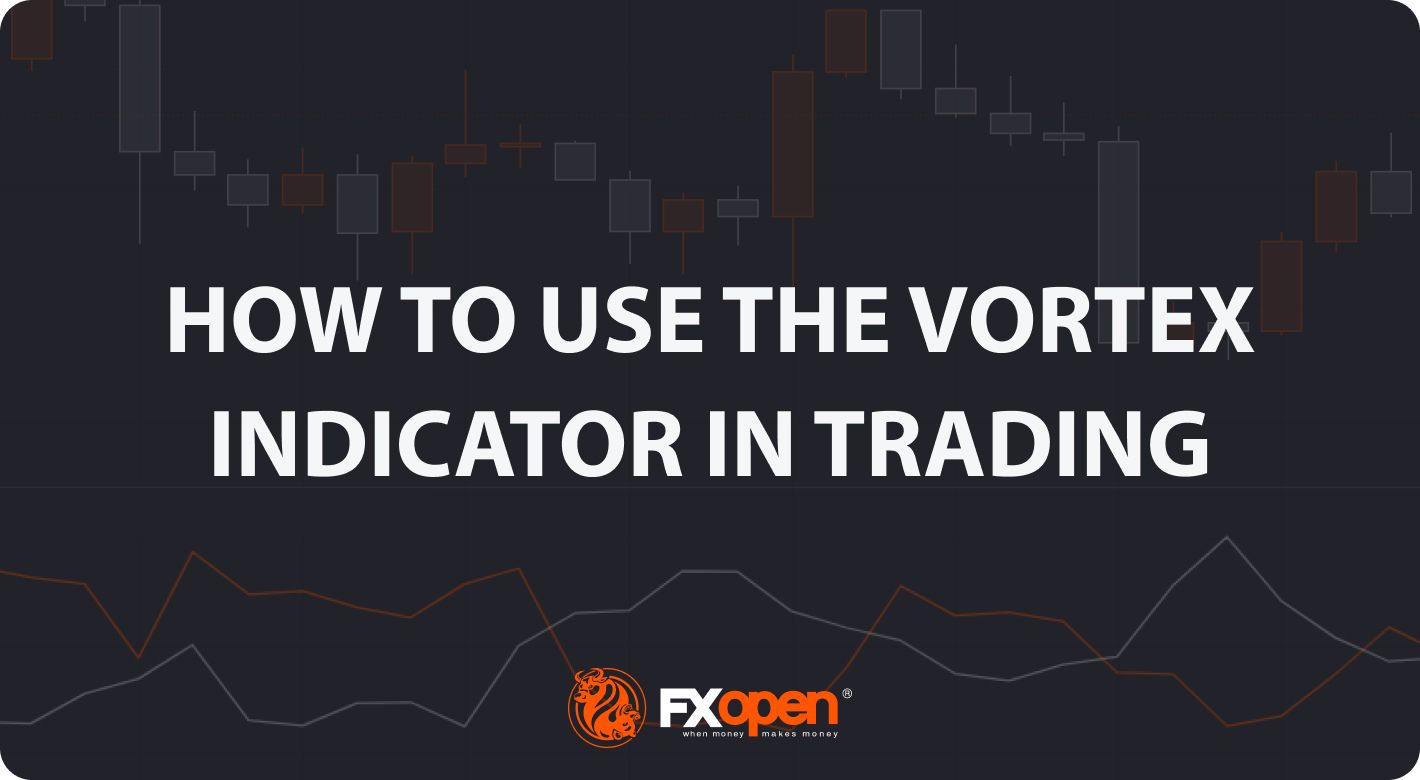FXOpen

The Vortex indicator is a lesser-known trading tool, but it can serve as a valuable aid in trend detection and confirmation. In this FXOpen article, we will break down the Vortex indicator, its calculation, and how to use it when trading.
What Is the Vortex Indicator (VI)?
The Vortex indicator (VI or VTX) is a versatile technical analysis tool developed by Etienne Botes and Douglas Siepman. It draws inspiration from water's natural flow and vortex motion and applies these principles to financial markets.
In trading, the VI is designed to identify the start of a new trend and confirm existing ones in an asset. It provides traders with a graphical representation of market movement and offers insights into the direction and strength of the trend.
It’s made up of two lines: the positive vortex indicator (VI+), reflecting bullishness, and the negative vortex indicator (VI-), indicating bearishness. When the VI+ line crosses above the VI-, it suggests that the trend is bullish and vice versa.
Vortex Indicator Calculations
The VI involves a relatively complex calculation.
The Vortex Indicator consists of two components: VI+ and VI-. Both are calculated using the highs, lows, and closing prices of the current and previous periods.
The VI is calculated as follows:
- Determine the upward and downward movement:
- Upward movement (+VM): The difference between the current candle’s high and the previous low.
- Downward movement (-VM): The difference between the current candle’s low and the previous high.
- Next, we smooth these values over a certain period (typically 14 periods). This results in +VM14 and -VM14.
- Calculate the True Range (TR) for each period, which is the greatest of the following three values:
- The current high minus the current low
- The difference between the current high and the previous close, taken as an absolute value
- The difference between the current low and the previous close, taken as an absolute value
- Smooth the TR over the same period to get TR14.
- Finally, normalise the smoothed +VM and -VM by dividing them by the smoothed TR:
- +VI = +VM14 / TR14
- -VI = -VM14 / TR14
The result is two lines, the VI+ and VI-, oscillating above and below zero.
How to Use the Vortex Indicator
The intersection of the VI+ and VI- lines often corresponds with shifts in market trends. When the VI+ line crosses above the VI- line, it typically signals the start of an uptrend and could be interpreted as a 'buy' signal. Conversely, when the VI- crosses above the VI+, it may suggest the beginning of a downtrend, representing a potential 'sell' signal. When there is a wide separation between the two, the trend can be considered strong.
It’s often recommended to use the VI in combination with other indicators and techniques to increase the accuracy of its signals. For instance, a trend confirmation tool, like a moving average, could be used alongside the VI to filter out false signals and improve its effectiveness. You’ll find both the VI and several types of moving averages in FXOpen’s free TickTrader platform.
The 14-period default of the VI can also be adjusted. Depending on the type of trading and the trader’s preferred time frame (day trading, swing trading, etc.), adjusting the period setting can help optimise the indicator's sensitivity to market changes. For instance, a shorter period may be preferable for scalping, while a longer one can be better suited for position trading.
Final Thoughts
In summary, the Vortex indicator is an effective tool for spotting emerging trends and gauging their strength. While it doesn’t provide as many signals as some other indicators, it still has its place in a well-rounded strategy. If you’d like to apply your knowledge across 600+ markets, you can open an FXOpen account and get started with the VI. Happy trading!
This article represents the opinion of the Companies operating under the FXOpen brand only. It is not to be construed as an offer, solicitation, or recommendation with respect to products and services provided by the Companies operating under the FXOpen brand, nor is it to be considered financial advice.
Stay ahead of the market!
Subscribe now to our mailing list and receive the latest market news and insights delivered directly to your inbox.








